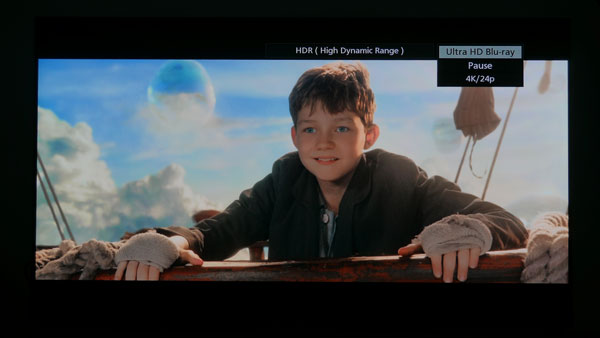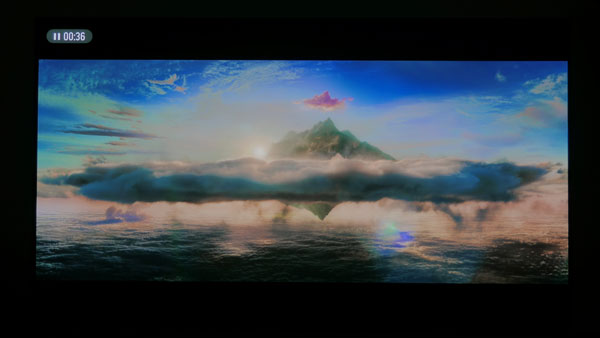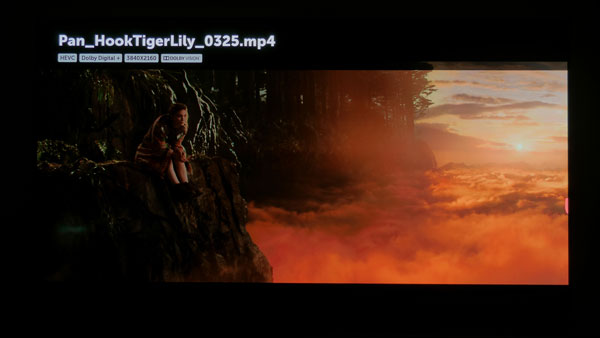There are several different formats for the delivery of HDR (high dynamic range) video content to consumers in the home, of which the two most prevalent at this time of writing are HDR10 open platform and Dolby Vision (DV) proprietary solution. The former is used in Ultra HD Blu-rays and the vast majority of 4K HDR streaming from Netflix and Amazon UHD Video, whereas the latter is currently limited to selected shows on certain streaming services (VUDU in the USA, and Netflix).
Here’s a table (accurate as of June 2016) listing the key differences between Dolby Vision and HDR-10 standards:
| HDR10 | Dolby Vision | |
| Standard: | Open | Proprietary |
| Video Bit Depth: | 10-bit | Up to 12-bit |
| Metadata: | Static (per title) | Dynamic (scene-by-scene) |
| Software Upgradability: | Yes | No (SoC hardware-embedded) |
| TV Brands: | LG, Panasonic, Samsung, Sony, etc. | LG, Vizio (US) |
| Delivery Medium: | Ultra HD Blu-ray, Netflix, Amazon | Netflix, VUDU (US) |
Dolby Vision is an end-to-end HDR ecosystem, which means the optimisation process starts right from the beginning during film capture, and permeates all the way through grading, post-production, mastering, encoding, distribution and finally playback on compatible displays. Every Dolby Vision TV will feature an Intelligent Display Mapping Engine that’s embedded within the SoC (system on chip), which is why a non-DV-compliant television can never be firmware-updated to become Dolby Vision-capable.
The Intelligent Display Mapping Engine identifies the output capabilities of the TV (peak brightness, black level, colour volume, etc.), thus allowing for accurate mapping from source content to the actual display performance on a scene-by-scene basis. Dolby claims its DV technology results in more faithful reproduction of the director’s original creative intent in three aspects:
In theory then, Dolby Vision should be superior to HDR10 when it comes to preservation of the original artistic intent of the video source, but is this borne out in real-world viewing? Let’s find out.

In the UK, the only TV manufacturer supporting Dolby Vision is LG Electronics, so we used an LG 55E6 OLED we recently reviewed for the purpose of this Dolby Vision vs HDR10 test. For HDR-10 content, we played an Ultra HD Blu-ray of Pan through a Panasonic DMP-UB900 – the best 4K Blu-ray player on the market at this time of publication – to be displayed on the OLED55E6. For DV, Dolby has kindly supplied us with a USB stick containing three demo clips from Pan that was mastered/ encoded in Dolby Vision, which we plugged into the LG E6 too. We paused at the exact same frames, and switched sources between HDMI and USB on the TV to spot the differences.
Note: We could have used a separate LED LCD 4K HDR television for presenting HDR10, but any differences would be muddied by LED LCD versus OLED technologies, which was why we decided to use the same display for this comparison. However, we did cross-check the results against other non-Dolby Vision LED LCDs from time to time.
The following photos (published with permission from Dolby) were taken with a locked-off camera with the exact same manual control settings throughout (aperture, ISO, shutter speed, white balance, etc.). The irony here, of course, is that most cameras don’t have sufficient dynamic range to capture the shadow detail and bright highlights from an HDR TV at the same time, so we had to sacrifice one or the other. We decided to preserve the highlight details in our photos – you’ll just have to take our word that shadow detail on the Dolby Vision shots remained still fully visible in real life.
The first thing we noticed was that although the general APL of HDR-10 video from 4K Ultra HD Blu-ray was brighter than Dolby Vision’s, bright highlights were frequently blown out on the former. The DV version exhibited warmer and more saturated, realistic-looking colours too.
Click on the options below to compare HDR formats:
HDR10 4K Blu-ray | Dolby Vision

Pan – timecode 00:19:01 (look at the bubbles’ outline & cloud detail in the sky)
We tried lowering the [OLED Light] and [Contrast] values on the LG OLED55E6V during UHD Blu-ray playback of Pan, but could never recover as much highlight detail as what’s delivered by Dolby Vision. Naturally, changing these settings entailed compromising other parts of the HDR10 picture too.
**
Dolby Vision | HDR10 4K BD | HDR10 [OLED Light] “50” | HDR10 [Contrast] “50”**

Timecode 00:19:28 (pay attention to the shape of the sun to the left of the mountain)
However, we discovered one method to restore the highlight detail during 4K Blu-ray playback on the LG E6V to almost the same level as Dolby Vision, and that’s by making adjustments on the source player itself. Here were the results when we lowered [Contrast] on the Panasonic UB900 to “-6“:
**
Dolby Vision | HDR10 UHD Blu-ray | UB900 [Contrast] “-6”**

Timecode 01:03:55 (pay attention to the sun to the right of the cliff)
**
Dolby Vision | HDR10 UHD Blu-ray | UB900 [Contrast] “-6”**

Timecode 00:19:01
Tweaking the settings on the 4K BD player wasn’t without its complications: as you can see yourself from the pictures above, the APL (Average Picture Level) ended being slightly brighter than the Dolby Vision presentation of Tiger Lily sitting on the cliff, but darker during the scene where Pan’s on the deck. Interestingly, we ran the entire Pan Ultra HD Blu-ray sequence on a Samsung KS9500 (otherwise marketed as the KS9800 in the USA) full-array local dimming (FALD) LED LCD we’re currently reviewing, and found that it could reproduce all the highlight detail without needing any adjustment to the source player.
While it’s tempting to jump to the conclusion that Dolby Vision was superior to HDR10 in terms of end-user HDR experience, we needed to point out that the LG 55E6 OLED’s HDR10 rendition was hampered by relatively low peak brightness and substandard tone-mapping. All we could surmise from our comparison were as follows:
In other words, Dolby Vision pulled ahead of HDR10 4K Blu-ray when the display featured suboptimal peak brightness/ colour volume/ tone-mapping, but the gap was closed to negligible levels by a high-end HDR TV with 1000+ nit peak luminance and accurate tone-mapping. Future developments like dynamic metadata for HDR10 (as demonstrated by Samsung at NAB 2016) may level the playing field or even swing things in favour of the open standard.
Perhaps the greatest appeal of Dolby Vision is the promise of high-quality HDR performance on low-cost and midrange televisions, allowing shrewd video enthusiasts to save some money in the pursuit of better home cinema experience, though any possible savings may be partially offset by the potentially higher prices of DV-enabled Ultra HD Blu-ray players (due to the licensing fees payable to Dolby Laboratories) when they’re launched. Exciting (if uncertain) times ahead…